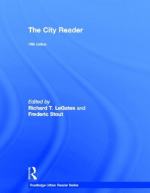
|
| Name: _________________________ | Period: ___________________ |
This test consists of 5 multiple choice questions, 5 short answer questions, and 10 short essay questions.
Multiple Choice Questions
1. When was "The Growth of the City: An Introduction to a Research Project" first published?
(a) 1915.
(b) 1925.
(c) 1932.
(d) 1920.
2. What conquistador wrote an eyewitness account of the conquest of Mexico by the Spaniards under Hernán Cortés?
(a) Bernal Diaz.
(b) H.D.F. Kitto.
(c) Henri Pirenne.
(d) Marco Polo.
3. The editors of The City Reader have taught at the San Francisco State University, University of California, Berkley and what other institution, according to the Introduction from the Editors?
(a) Stanford University.
(b) Coloumbia University.
(c) Rutgers University.
(d) Yale University.
4. V. Gordon Childe writes in "The Urban Revolution" that the three revolutions separating the major eras are the urban, the industrial and what?
(a) Philosophical.
(b) Paleolithic.
(c) Neolithic.
(d) Artistic.
5. The author of "The Polis" writes that the term polis refers to more of a what than the current "city"?
(a) Peace state.
(b) Autocratic state.
(c) Dictatorial state.
(d) Mosaic-state.
Short Answer Questions
1. Engels writes that it is what that has crammed the people into squalor in "The Great Towns"?
2. The author of "City Origins" and "Cities and European Civilization" describes the growth of cities in Western Europe as historically bound by two elements: a middle class, and what?
3. What civilization's community was more geographically centered, and citizens were expected to contribute to the justice system, seeing it as their community duty according to the author of "The Polis"?
4. When was "The Almost Perfect Town" first published?
5. Whose "thoughtful prescriptions for urban poverty" are discussed by LeGate in "How to Study Cities"?
Short Essay Questions
1. In Friedrich Engels' "The Great Towns," how does the author describe the other side of the river? What does he blame for the urban congestion?
2. How many Americans lived in urban areas in 1960, according to Kingsley Davis? How did this change?
3. What is the basis of study in "A New Geography of Centers and Margins: Summary and Implications"? What did the author conclude?
4. What type of dwelling and community is described in "Levittown and America"? What does the author conclude?
5. What was Davis' conclusion about the patterns of urbanization in "The Urbanization of the Human Population"?
6. What works of W.E.B. Dubois are in the collection? What does Dubois center on in his writing?
7. How many selections are in The City Reader? How were they chosen, according to Richard LeGates?
8. What are examples of "boundaries" as defined by Kevin Lynch? What are nodes?
9. When did Ernest W. Burgess describe the process of expansion through zones? Why did it occur?
10. What metaphor does Christopher Alexander make in "A City is Not a Tree"?
|
This section contains 961 words (approx. 4 pages at 300 words per page) |

|




